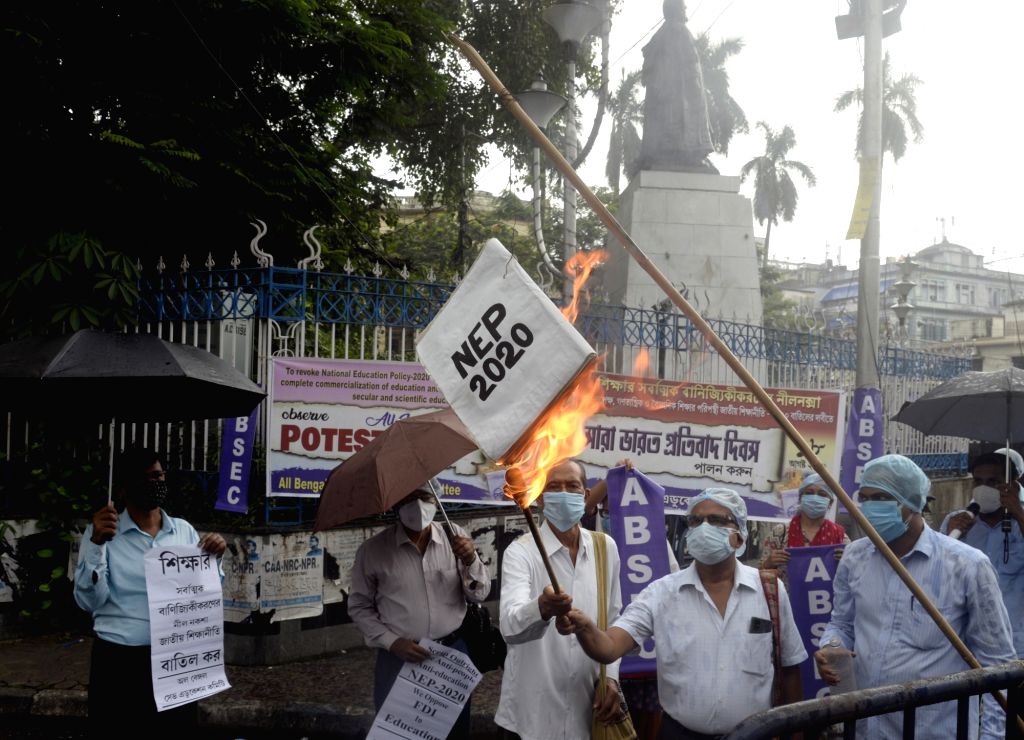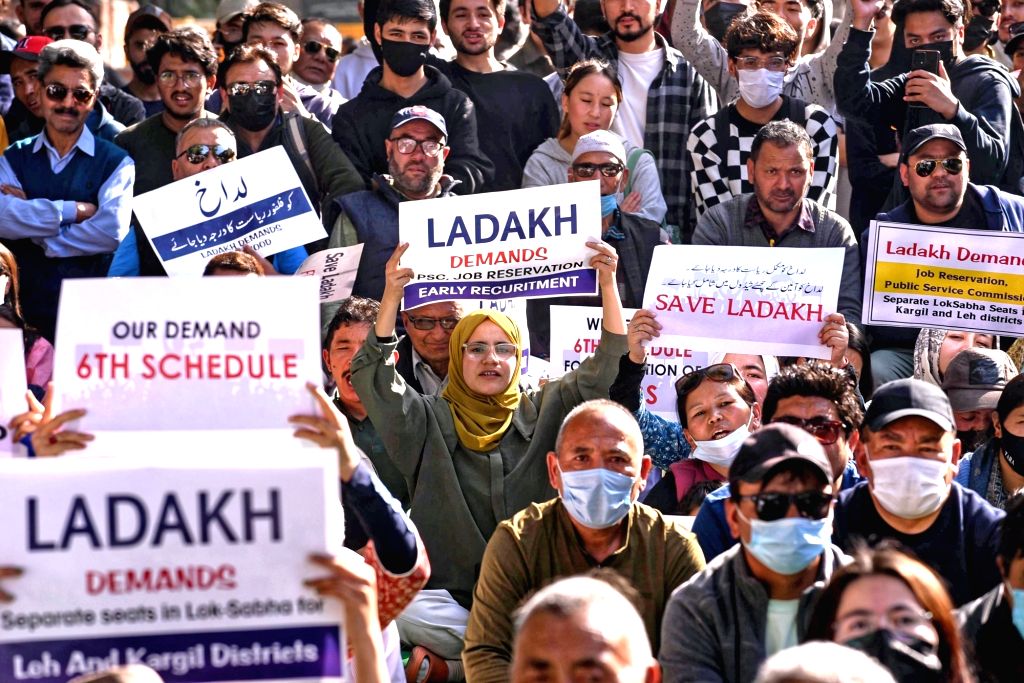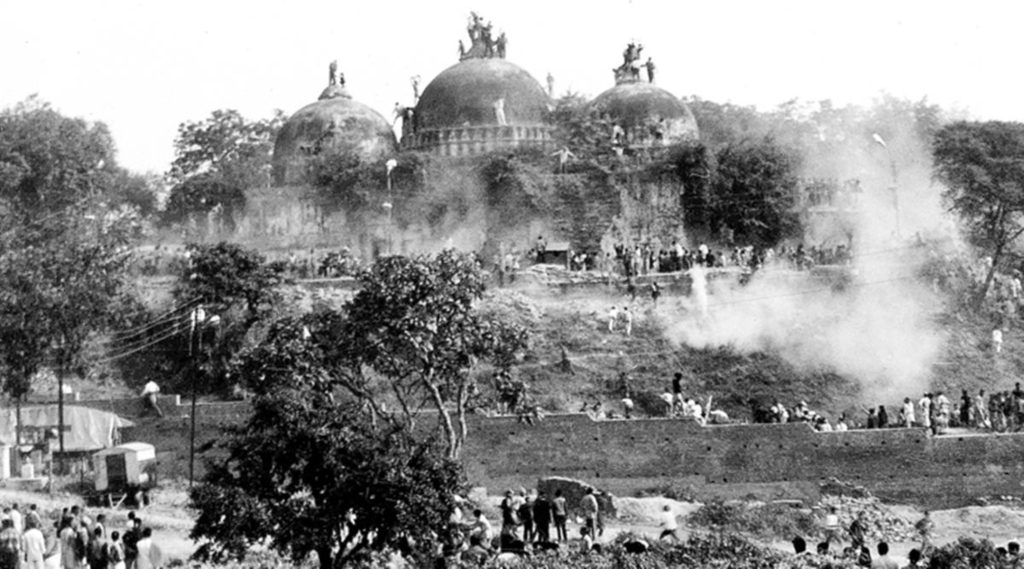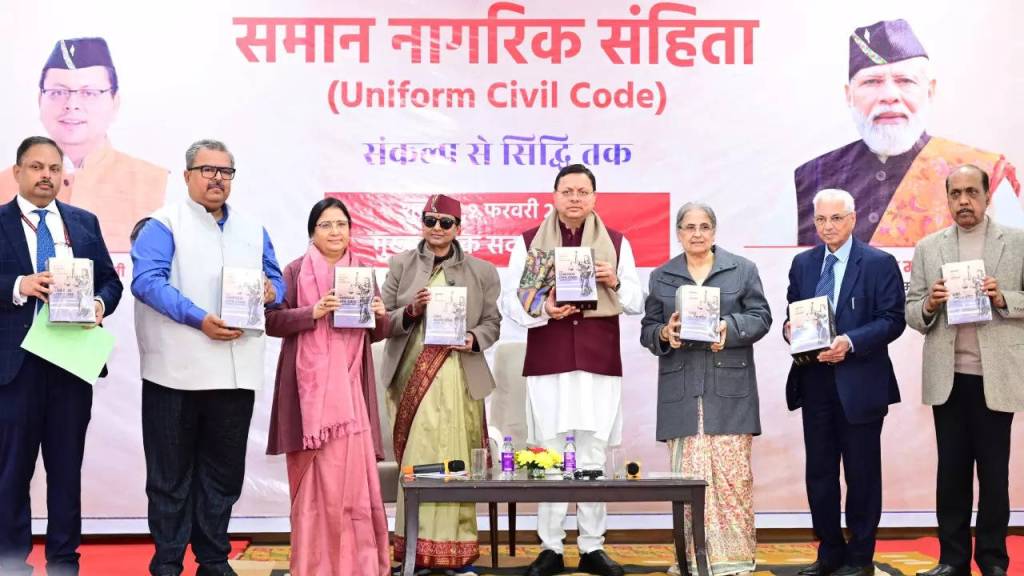After being dislodged from power in the state of West Bengal, the Communist Party of India (Marxist) (CPM) finds itself reduced to a singular state government in India, Kerala. The CPM’s loss of electoral power in West Bengal is a sore spot for the party, especially after its 34-year long reign in the state, which is heralded as the “world’s longest democratically elected communist government.” Like any other electoral party, the CPM is clearly very interested in a return to power in their old bastion and a method that they have particularly chosen for this bid is a complete revision of the history of their rule in the state government. Madhu Sudan Chatterjee, a writer for CPM West Bengal state committee’s mouthpiece Ganashakti, recently wrote an article for NewsClick.in titled “Bengal: TMC’s ‘Curious Plot’ Vis-a-Vis Maoist Activities in Jungle Mahal” which is part of this trend of CPM attempting to alter history. The entirety of the article discusses the plight of the CPM cadre in the region, 14 years after the Lalgarh people’s struggle, but oddly enough, avoids going into any specific political details about why such a situation emerged. The piece talks of how CPM cadre were subjected to violence by Maoists during the Lalgarh struggle, about how many Maoist defectors were later given ‘rehabilitation’ packages and employment by the Trinamool Congress (TMC) government, carefully carving out an emotional story for the reader where the purported killer reaps benefits while the purported victims still live in fear and pain, but the piece detracts from delving in further regarding what was actually happening in the region. A general tendency common in these re-readings of history by CPM and its affiliated intellectuals is that they present the picture of a state government that is powerless and has limited ability to combat the greater forces of neoliberalism and central government, with the CPM merely being an intermediary having its arms twisted by the spectre of neoliberalism. These are the re-tellings common in Prabhat Patnaik[1] and Vijay Prashad[2], at the very least. It is therefore important to re-iterate the events that took place in West Bengal that rocked the politics of the country and lit a spark that re-vitalized political discourse in the country from a pro-people line again.
Lalgarh: What Really Happened
“Lalgarh – the name resonates in the hearts and minds of struggling people all over India: adivasis and dalits, farmers and fisherfolk, workers and students. In West Bengal it has taken its place along with Singur and Nandigram in songs and slogans of resolve and resistance. Wherever people are fighting for their livelihoods and their dignity, resisting the onslaught of state and capital, Lalgarh now provides inspiration and courage. Most importantly, for the long-oppressed adivasis, Lalgarh has already entered the annals of legendary struggles of the likes of the santhal ‘hul’ led by Sidhu and Kanhu, and the historic rebellions led by the likes of Birsa Munda, Tilka Majhi and Chand Bhairab.”
– Partho Sarothi Ray, a biologist who recorded the events at Lalgarh[3]
Lalgarh and the Jungle Mahal region of Bengal has historically been a highly impoverished region, a simmering pot surely set to boil. An area largely comprised of an Adivasi population, Lalgarh had a single developed road that connected it to the rest of its district and had no clean water and electricity to show for. A particular feature of the peoples’ lives in this region was repeated horrific actions of police brutality and violence. The tipping point emerged in 2007, when O.P. Jindal Steel Group was granted rights to construct a Special Economic Zone (SEZ) in the Jungle Mahal region, particularly Lalgarh, for steel production. The West Bengal state government facilitated this project, granting nearly 5000 acres of Adivasi land to the O.P Jindal Steel Group, land protected by various legislations, for the sake of this project of the comprador bureaucratic bourgeoisie.

For a brief detour from the course of events at Lalgarh, it is important recall the nature of SEZs. The Government of Canada’s Trade Commissioner’s Office defines the SEZs in India as “a geographical region that has economic laws that are more liberal than a country’s domestic economic laws. SEZs typically offer competitive infrastructure, duty free exports, tax incentives, and other measures designed to make it easier to conduct business. Accordingly, SEZs in India are a popular investment destination for many multinationals, particularly exporters.”[4] As scholar and activist Rona Wilson highlights, “SEZs will be notified as ‘industrial townships’ under Article 243Q of the [Indian] Constitution which exempts them from the provisions of Part IX of the Constitution that provides for elected local governments.” Therefore, the appointed ‘Development Commissioner’ and the SEZ Developer replace the regular institutions of the state which are supposed to provide democratic rights to the people, with all state institutions like police, judiciary and day-to-day governance are subject to the duo of Development Commissioner and the Developer. He elaborates that “the judicial and policing functions are altered with ‘no investigation, search or seizure shall be carried out in a Special Economic Zone by any agency or officer’ without the permission of the Development Commissioner under Section 22 of the Act with the exception being only in the case of ‘notified offences’, notified by the Central government under section 21 of the [The Special Economic Zones] Act [2005], which are also to be intimated to the Development Commissioner.”[5] Essentially, in the name of creating avenues for industrial development, an entire region is constructed to only serve the interests of the corporation to which this region is gifted on a platter by the state. Workers can’t form unions, labour laws in general are eradicated and the democratic pretensions of an already undemocratic Indian society are shed entirely in SEZs, a monstrous manifestation of imperialism’s neoliberal agenda.
The so-called Communist Party of India (Marxist), in power in West Bengal at the time for 3 decades, decided that this model of development was what the people of Lalgarh deserved. As a democratic rights struggle started to emerge in the region against the SEZ and the blatant land-grab by the state at the service of O.P. Jindal Steel Group, the boiling point was reached on November 2, 2008 when a landmine was detonated to attack a joint procession of government officials (including then West Bengal Chief Minister Buddhadeb Bhattacharya) and business leaders. As a means of curbing the democratic assertion of the peasantry of Lalgarh, the state government unleashed the police to rain hellfire upon the people with multiple incidents of rape, torture and indiscriminate brutalities against men, women and children becoming commonplace. The Preamble of the Indian Constitution claims to guarantee all its citizens “fraternity, assuring the dignity of the individual…”[6] In societies where democratization has not occurred and the age-old feudal relations continue, dignity, that is, to be treated as an equal human being, is also a subject of struggle. The Dalits and Adivasis of India, a society claiming to be democratic, continue to live undignified lives with centuries of practices which de-humanize their existences. And when the oppressed and exploited of such societies, particularly the peasantry, retaliate, their responses will reflect the centuries of heinous brutalities met out on them.

A fact-finding team present in Lalgarh during the period wrote this in their report,
“The people in all the villages virtually demonstrated how police had tortured them, entered houses at the wee hours of night to break everything and beat up people in the name of ‘raids’, how any movement of the people at night even to look for their cattle was banned, how almost in every family there is someone or the other who had been booked for being a ‘Maoist’, how 90 year old Maiku Murmu of Teshabandh was beaten to death by the police way back in 2006. Young school girls were regularly molested by the police in the pretext of ‘body check’, women were forced to show their genitals at night during ‘raids’ to confirm their gender. Before every election 30-40 people from every village were picked up as ‘Maoists’ in order to debilitate the opposition. The incident of Chhotopelia, where a number of women were ruthlessly beaten up and one of them Chhitamoni lost her eye, virtually broke the limit of patience of the people. They have now risen up against this long drawn police atrocity.”[7]
This boiling cauldron tipped over and spilled in the form of a militant uprising of the Adivasis in Lalgarh who burned police stations and announced a social and political boycott of all police personal. State agents, particularly the goons of the state, the police, would not even get a drop of water from the people of Lalgarh. The struggle was not just random violence that fizzled out, but transformed into an organized democratic people’s movement, led by the Pulishi Atyacharer Biruddhe Janaganer Committee (People’s Committee Against Police Atrocities, or PCPA). One of the demands of the PCPA was that the police must hold its ears and issue apologies to the people of Lalgarh for the atrocities committed by them. This should expound upon the nature of the state and the entrenchment of feudal consciousness among the people, where even such a grave matter could be resolved by a simple gesture of humility which the state instead saw as grave humiliation!
The movement expanded rapidly, with the organized people of Lalgarh liberating vast areas of the Jungle Mahal region from police and CPM’s control and setting up people’s committees which held massive meetings to democratically engage and organize the people in governing their lives without the terror the police, the CPM government, the landlords and the O.P. Jindal Steel Group. The above-mentioned fact-finding report also mentions the shift of the people’s anger towards the CPM government. “Coupled with Police terror [the villagers] talked of CPM terror too. CPM cadres and leaders have only acted as informers to police they said. Today when we saw the jubilation among people after demolishing Anuj Pandey’s house, we can understand the emotions of the people. Because what we saw among the people was utter hatred for CPM. They showed us around in Madhupur how the local panchayat office was turned into a camp of the Harmad Vahini (armed paramilitary militia of the CPM). They told us how the ‘motor cycle army’ of the Harmads zoomed around the villages, terrorizing people, breaking their houses brutally, firing in the air, and beating people up. We talked to one villager whose house was being demolished by the Harmad, he helplessly kept calling the police in vain. It was only after an armed resistance was put up that the Harmads were forced to retreat to Memul and further to Shijua……. similarly, they narrated the incident of Khash Jongol, where, because of the lack of armed preparedness from the Committee, the Harmads abruptly entered with the help of the police and opened fire and killed three people, injuring three others, and fled. Police and CPM are not just in alliance, they are the same thing. They told us how the police stood as mute spectators whenever the Harmads went on a rampage. The Harmads have even used police jeeps to move around. The local CPM cadres provide information about the people within the villages to the police.”[8]

An All-India fact-finding team also went to the region to investigate the happenings and reported, “our overwhelming impression was that the people of Lalgarh want to participate in the upcoming elections. However, they wish to cast their vote in an atmosphere of peace and security, rather than one in which they feel intimidated by threats of violence from the police or from the ‘Harmad Vahini’ (alleged CPM cadre).”[9] A five member team from this larger All-India fact-finding team was also present in the nearby Madhupur village where they wrote in their report that, “in the presence of the fact finding team members, the villagers prepared for a procession to warn nearby villages against possible further entries by the police and the Harmad Vahini. People from other villages who had been informed soon joined the procession. Women participated in large numbers. They were completely peaceful, not carrying any fire-arms, and not in a mood for any confrontation. Members of the fact finding team left as the procession was beginning. We later came to know from the villagers that the procession had been fired upon by the Harmad Vahini near Memul, a village adjacent to Madhupur. Members of the procession were forced to flee, and women in Memul had to lock themselves up in their houses. It appears that the Harmad Vahini also destroyed some of the houses in Memul, and tried to break down doors.”[10]
Joseph Stalin, in 1924, iterated that “social-Democracy is objectively the moderate wing of fascism. There is no ground for assuming that the fighting organisation of the bourgeoisie can achieve decisive successes in battles, or in governing the country, without the active support of Social-Democracy. There is just as little ground for thinking that Social-Democracy can achieve decisive successes in battles, or in governing the country, without the active support of the fighting organisation of the bourgeoisie. These organisations do not negate, but supplement each other. They are not antipodes, they are twins.”[11] CPM, which in practice attempted to function as merely a social democratic force highlighted this very nature, with the Harmad Vahini showing how CPM was ready to unleash the most reactionary form of violence on the people at the service of finance capital (in the form of the SEZs), practicing social fascism. It is in light of these very developments that the Newsclick.in article must be re-evaluated.
CPM’s Litany of Lies
The article on Newsclick.in begins with the rhetoric of missing persons, of violence against CPM cadre and how the Maoist-led movement in Jungle Mahal was supposedly barbaric in nature and in its form of violence. Yet, as the above accounts and reports show, the people were often peaceful and only began organized militant action against the police and the CPM’s Harmad Vahini after being victims of the fascist violence for prolonged periods of time. While Madhu Sudan Chatterjee attempts to picturize the Adivasis and their Maoist politics as purely driven by their anti-revisionist positions against CPM, the overwhelming on-ground accounts as shared above highlight a completely different story. Coming to their sequence of events, the author writes, “However, several villagers point out that the Maoists in the area never uttered a single word about changing the society. Not a single movement was initiated to raise wages, build roads and improve the health, education systems.” If the blatant CPM-sponsored parroting in this article was not anymore clearer, a testimony from a school teacher is added about the November 2, 2008 landmine blast where the teacher tells the author how this proves that Maoists were “anti-development.” This is a blatant distortion of what was actually happening in Lalgarh. As members of the All-India fact-finding report, Manika Bora and Budhaditya Das wrote, the movement in Lalgarh “not only reacted to state repression, but had also taken matters of livelihood and development into their own hands.”[12]

Koustav De further reiterates this and writes, “in the middle of all the violence and terror, the people have decided to take up development initiatives that in theory are their fundamental right but which they have never seen.”[13] He elaborates that Lalgarh’s people, who had until this point been carrying water from a singular rivulet for all their agricultural needs, capable of only cultivating one single crop throughout the year because of this, had managed to build an irrigation system and even shallow underground pumps in the midst of all this! This rivulet also is highly likely to dry up and the region in general is significantly dry. The people’s committees managed to set-up tube wells which solved the drinking water crisis in the region, where people had in the past been forced to drink the same water they used to bathe in. It is then logical to also conclude that there was a severe health crisis among the people of Lalgarh. The nearest hospital was in Midnapore, 40 kms away. The only rural health centre in Lalgarh had remained locked for over an year prior the PCPA’s arrival and most people in the area had not seen an actual doctor in their lives. The PCPA managed to open the health centre, co-ordinate with volunteer organizations of doctors and managed to bring in doctors twice a week. The PCPA distributed medicines for free and a local team of volunteers was trained by the doctors in first-aid and in mitigating diarrhoea, a common issue among the people. Eye-care camps were set-up to mitigate cataract. Koustav De concludes, “All these activities organized by the villagers is what is perplexing the authorities and the ruling party. Till date they have had to counter opposing parties or protests but have never had to counter development. They are confused, scared and in absence of answers are reacting in an erratic and violence manner. The BDO has declared the health center illegal stating that it has been forcefully occupied! But he had no answer to the question as to what state was it in before occupation. According to him it is fine when authorities fail to appoint a single doctor to visit a health center in two years and it remains locked, but it becomes illegal as soon as people decide to turn it into a functional one.”[14] The question of development, that Madhu Sudan Chatterjee is trying to raise, is not a question of development at all, but a question of CPM’s anti-people imperialist model of development in contrast to the undeniable existence of a people-centric model of development that also manages to militantly oppose feudalism, imperialism and the comprador bureaucratic bourgeoisie.
Moving on, the author of the Newsclick.in article writes, “the killings dropped sharply after Mamata Banerjee was sworn as in Chief Minister on May 20, 2011, indicating that a ‘collusive arrangement with Maoists’ was in place. But, this ‘arrangement’ did not last.” Perhaps the author has forgotten the brutal Operation Lalgarh, wherein the CPM begged the central Indian National Congress (INC)-led government to send in paramilitary to end the Lalgarh movement. The Central Reserve Police Force (CRPF) and the special anti-Maoist unit COBRA were deployed by the state in a large-scale siege in 2009 itself to counter the movement and rain the worst forms of violence against the people of Jungle Mahal region, with the excuse of ending Maoist movement in the region. By the time Mamata Bannerjee was sworn in, the movement had heavily receded in light of the violence unleashed by the state. Yet, somehow, Madhu Sudan Chatterjee delves into conspiracy theory in an attempt to prove a “Mao-Mamata nexus.”
On this subject, it’s important to point out another argument that the Newsclick.in article, that of the good lives being lived by Maoists in TMC’s Bengal over that of CPM’s own cadre. Chhatradhar Mahato, one of the faces of the PCPA and the Lalgarh movement joined the TMC in 2020. Many others defected from the PCPA and Maoist ranks and surrendered to the police. Since the Newsclick.in article is attempting to create a false narrative of Maoist harmonious living in TMC, it ignores how most of Chhatradhar Mahato’s fellow PCPA leaders met brutal ends during the course of the state’s offensive. The PCPA’s President himself, Lalmohan Tudu was shot dead by the CRPF along with two of his relatives, with the then Inspector-General of CRPF claiming that they were murdered because the CRPF held the view that these people “were Maoists killed in exchange fire.” A public statement released by eminent lawyers, social activists, writers and journalists engaged with the Lalgarh struggle was released at the time highlighting how Lalmohan Tudu had shown no such overtures and was functioning purely with the aspiration of a democratic struggle for dignity and against police atrocities. The PCPA in general, urged all political parties who wanted to support the cause of Lalgarh to join in on their struggle without the banners of their parties holding them back. The TMC was one such force which also joined in on this effort, a fact the CPM distorts as a means of arguing for their “Mao-Mamata” conspiracy theory. It is truism at this juncture of history to assert that the TMC was an opportunist force that utilized this genuine people’s struggle for its own electoral gain. Yet, the brutal anti-people offensive against all those who continued to uphold the Lalgarh struggle only intensified, with the PCPA openly asserting that it would “fight until death”. Those who continued to uphold class struggle and continued to side with the people’s interests continued to be Maoists in the eyes of the state, all those who surrendered and defected from the cause are the only ones that the Newsclick.in article can seem to talk about. As the Newsclick.in article itself pointed out, the Maoist leader M. Koteswara Rao “Kishenji” was murdered in such a horrific and atrocious manner by the state forces that any myths of this Maoist-TMC nexus can be dispelled. Even Chhatradhar Mahato spent nearly a decade staving off UA(P)A cases and massive legal charges brought against him to keep him in prison. Even organizations like Amnesty International, whose fact-finding team was stopped from arriving in Lalgarh (even when Amnesty’s teams are allowed in full-fledged warzones!), wrote to the Indian government urging them not to commit atrocities on the Adivasis during Operation Lalgarh. In fact, mainstream bourgeois media-houses like Hindustan Times have written pieces celebrating how “Mamata Banerjee did right to wipe out Maoist violence in West Bengal!” Conspiracy theories have a tendency of falling very quickly at the sword of facts.
Importance of Remembering Histories of People’s Struggles
“Hopes frozen, children silent.
The bridal Greenland-barbed and barren.
Tea being served to personas.
A few cameras -terrifying us
as if they were serpents eyes.
A child with a slate stood.
I asked her where is the teacher?
‘he is on the leave for the last 60 years’
came the jolly reply.
‘Yes one of those Indian leaves’ a toothless
bhadralok interposed.
‘Never mind the police is here’ some one joked.
‘One is dead and the numbers will swell’ told an
optimist reporter.The corpse before us had three neat holes on it,
It’s a ‘military-styled-ellipsis’, commented Mao Himself.I tried hard to cry but couldn’t,
– Imtiaz Akhtar, A Visit to Lalgarh
You know why?
These days one dead hardly invites tears.”
It should be stated that this article was not being written merely to debunk Madhu Sudan Chatterjee’s and by extension, CPM’s revisionist history. The Newsclick.in article has no facts to cite but what CPM cadre conjure. It’s not a thorough piece, it even gets the date wrong on when the Maoist parties unified in India. Yet, what it represents is a larger attempt at not just altering history to make CPM’s worst look better 14 years later, but it is also an attempt to wash away the rich history of class struggle and new democratic struggle in India. Before concluding this writing, I interacted with an academic who during their days as a student was part of the fact-finding teams which went to Lalgarh. They were perplexed as to why anyone would be interested in their work from the time and particularly, what is interesting about Lalgarh movement for anyone in the present?

Since Lalgarh, India has seen itself warped in the grip of Brahmanical Hindutva fascism. The then Operation Greenhunt, of which Operation Lalgarh was just an extension, has transformed into an extensive and much more elaborate offensive under Operation SAMADHAN-Prahar. Yet, this struggle, which began with the demand to make the police merely say sorry, is a spark in the history of Indian peoples’ struggle for a truly democratic society which offers a firm reminder of what the oppressed and exploited of Indian society are capable of achieving. Countless individuals among the petite bourgeoisie, particularly intellectuals, who were once in the thick of the peoples’ movements like Lalgarh, now live with their heads down, biding time and hoping that the nightmare of Brahmanical Hindutva fascism will somehow pass over. Remembering peoples’ struggle, the history of mass movements and the power of organized resistance, is the need of the hour. No change in society has occurred without the sharp struggle waged by the masses, and the struggle against Brahmanical Hindutva fascism and Operation SAMADHAN-Prahar are no different. Only by assessing this past can we truly partake in the present to build a better future.
by Chandni Mahto, student of engineering, Jadavpur University
Download PDF of this article here.
References:
[1] https://revolutionarydemocracy.org/rdv13n2/aftnand.htm
[2] Prashad, Vijay, No Free Left: The Futures of Indian Communism, Leftword (2015)
[3] http://sanhati.com/excerpted/2040/
[4] https://www.tradecommissioner.gc.ca/india-inde/special_economic_zones-zones_economiques_speciales.aspx?lang=eng
[5] https://toanewdawn.in/manufacturing-imperialism-the-political-economy-of-sez-rona-wilson/
[6] https://www.constitutionofindia.net/articles/preamble/
[7] https://mronline.org/2009/06/18/report-of-fact-finding-team-from-jnu-on-the-eve-of-lalgarh-violence/
[8] https://mronline.org/2009/06/18/report-of-fact-finding-team-from-jnu-on-the-eve-of-lalgarh-violence/
[9] http://sanhati.com/news/1335/
[10] http://sanhati.com/excerpted/1083/#27
[11] https://www.marxists.org/reference/archive/stalin/works/1924/09/20.htm
[12] https://www.jstor.org/stable/40279768







Leave a comment